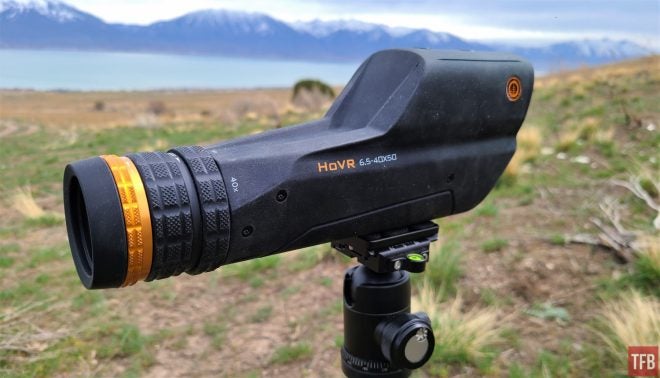Horus has expanded their optics lineup with a new spotting scope. Joining their rifle scope and wind meter is the HoVR 6.5-40×50 spotter. It has a Tremor 4 reticle in the first focal plane, and is one of the smallest spotters on the market.
More Horus Optics on TFB:
- TFB Review: Horus HoVR 5-20×50 Scope with TREMOR 3 Reticle
- USSOCOM Select Nightforce for Ranging – Variable Power Scope
- [SHOT 2020] Horus Vision – A Complete Solution
- New Bushnell Spotting Scope – LMSS2 Elite Tactical with Reticles
- Canada’s C20s get Schmidt & Bender 3-20×50 Ultra Short Scopes in Coyote M17 TAN
I was shown a pre-production model of the spotter at SHOT and it immediately had my attention. I generally use spotting scopes out in the hills, on foot, and I am always interested in a smaller, lighter option. Big, bulky spotting scopes have some advantages, but they absolutely suck to carry up a mountain. Large objective lenses gather more light, but they also increase weight and take up space in a pack.
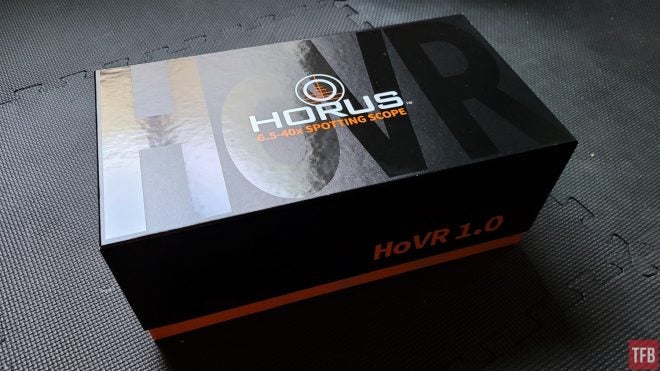
HoVR Packaging
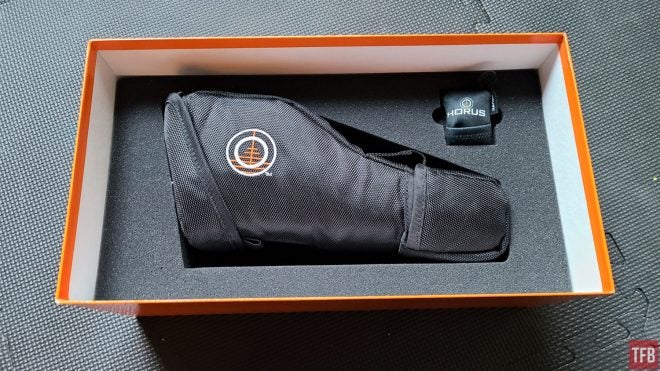
HoVR Packaging
Features
The first and most obvious feature of the spotter is its size. This thing is small. Except for the offset between the objective lens and eyepiece, it is almost akin to the size of a rifle scope.
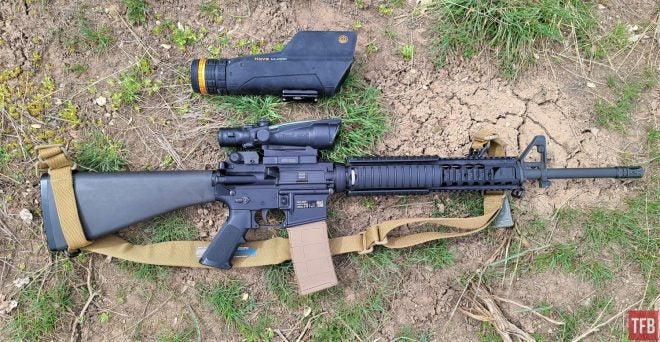
HoVR spotter with a Trijicon 3.5x TA11 ACOG for scale.
There are three adjustments knobs at the eyepiece. The rearmost wheel controls the diopter setting which adjusts the focus of the reticle, the middle one controls the image focus, and the furthest forward controls the magnification. I prefer this layout because all adjustments are in the same general area and can be used without reaching forward on the scope body.
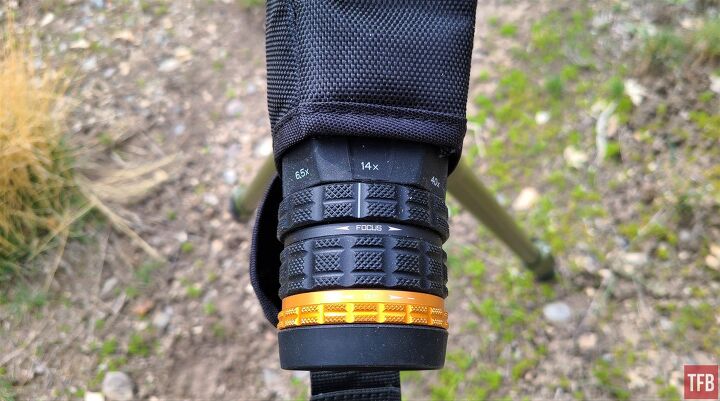
The controls are all located on the eyepiece
The exterior surface of the spotter is rubberized. A padded case is also included with the HoVR. It is designed to allow the spotter to be used while the case is attached. The covers over the objective and eyepiece are secured with magnets.
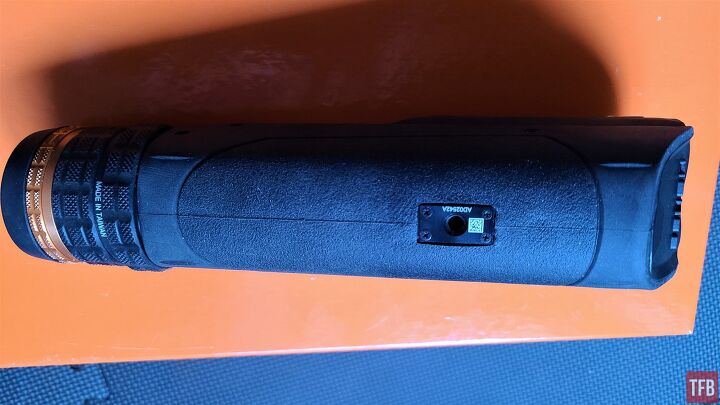
Underside of the HoVR
The top of the spotter has two threaded inserts that appear to be a mounting point for an accessory rail. A threaded insert sits in the bottom of the scope for tripod or adapter plate attachment. The spotter is made in Taiwan and is clearly labeled on the underside.
Reticle
At the heart of the HoVR is the TREMOR4 reticle. First focal plane reticles have grown in popularity in rifle scopes, and have made their way into a few spotting scopes as well. The TREMOR 4 combines a milliradian grid with the patented Time of Flight Wind Dots used in TREMOR reticles.
Placing a milliradian-based reticle in the spotting scope makes this an excellent tool for calling long range shots. If the shot is a miss, the spotter can measure from the location of the impact to the target and provide a very accurate second shot correction. Measuring objects with the reticle to calculate their size or range is far easier with a highly-magnified spotting scope than the average riflescope.
Because the reticle is located in the first focal plane, it changes in size as the magnification changes. This means the subtensions are always correct at any magnification. The trade off is that the reticle becomes rather small at low magnification and it is hard to read. This is a small price to pay for usability throughout the power range, though.
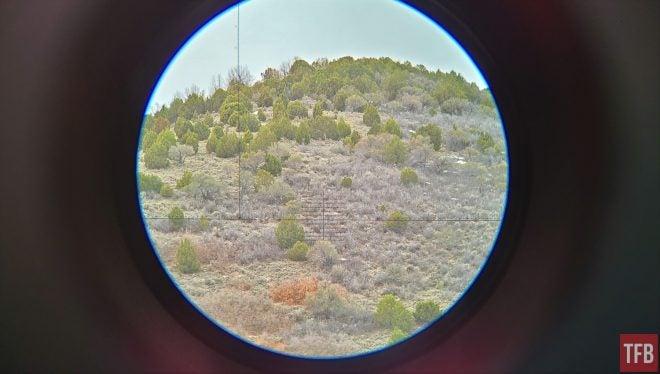
View through the spotter at low magnification (note: this is a terrible representation of glass quality and was taken with a cell phone)
A secondary measuring scale is visible from 6.5x to about 14x. Above 14x the secondary vertical scale moves out of the field of view.
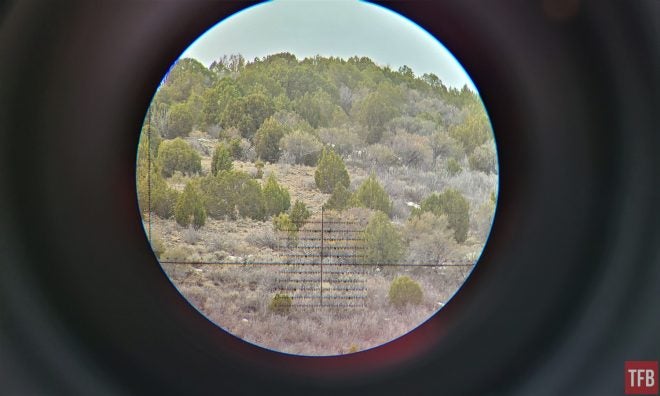
The reticle scales along with the image, so the subtensions are always correct
The reticle sits in the bottom half of the field of view, which is a great location. There are many situations where a clear field of view is preferable to a view through the reticle, and that is easily accomplished by using the top of the field of view. But the reticle is still centrally located and accessible when you want to use it.
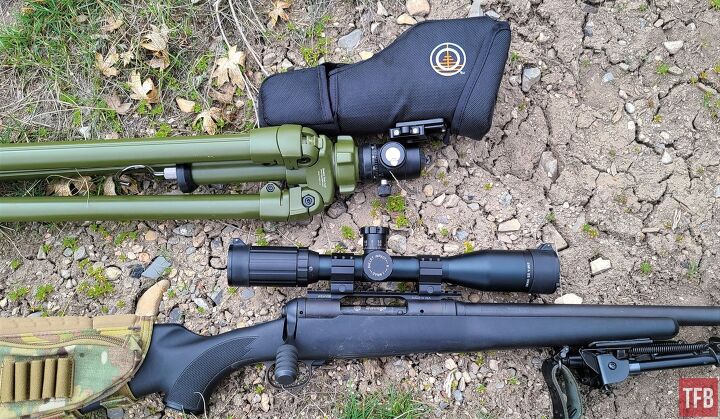
In The Field
The HoVR is an absolute dream to carry in the field. It is small, light, and is very easy to fit packs or pouches. Large spotters can take some extra planning to get the weight of the pack right. Not so with the HoVR. It is like carrying an extra Nalgene bottle.
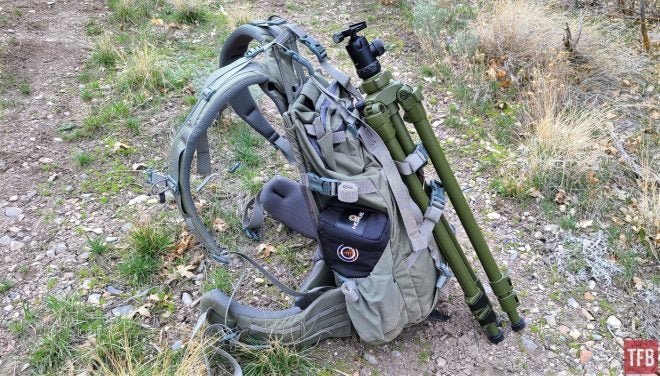
It even fits in the water bottle pouch on the side of a Mystery Ranch pack
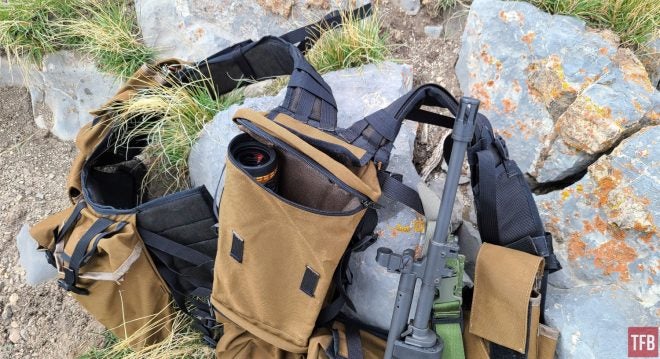
The HoVR even fits in the back pocket of a Pattern 83 battle jacket
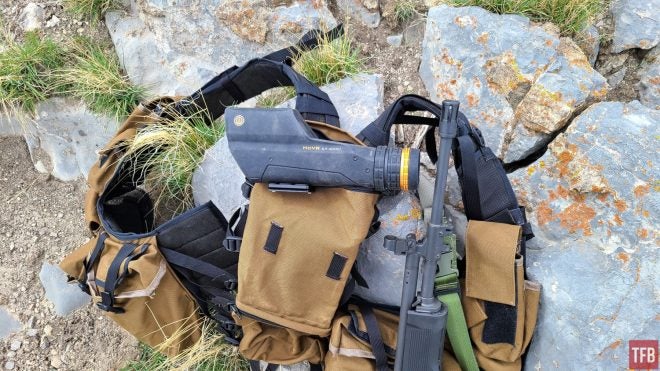
The zoom range is one of my favorite features of the spotter. The 6.5x low end gives a very wide field of view. The 40x high end is plenty for most uses except finding bedded game animals at extended distances. And, because the reticle is a first focal plane, you can use those subtensions at any point between 6.5x and 40x.
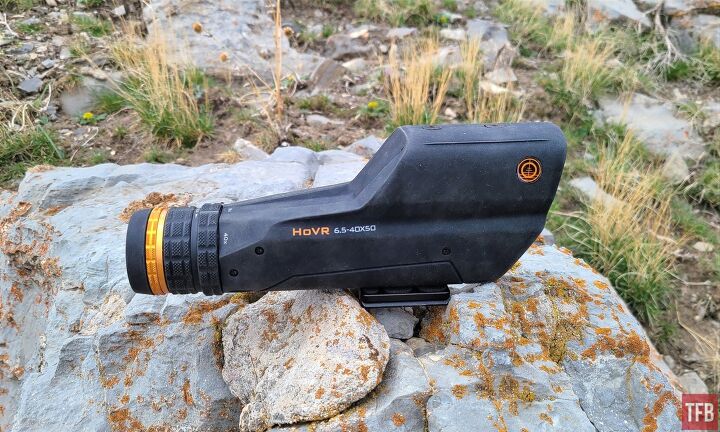
Another benefit of the low minimum zoom range is in nontraditional uses. 6.5x is comparable to many low-power variable scopes on the market. It is not uncomfortable to use as a handheld unit, sort of like an old-time sailor’s spyglass. I also found it usable at around 10x from an improvised support, such as the gas block of a rifle or a conveniently-sized rock. These secondary uses have their place but are not as robust as a sturdy tripod.
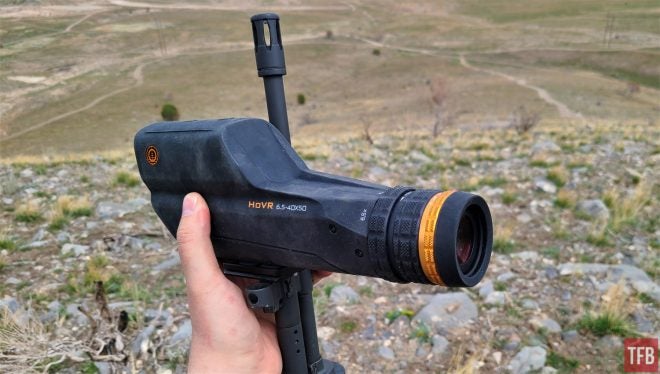
All design choices have tradeoffs, and in the case of compact spotting scopes, a smaller objective lens means less light gathering. If you primarily use a spotter glassing for game at first and last light, this can be a concern. But the HoVR is not intended to compete with large, heavy 85mm spotters. It is more comparable to a pair of binoculars in size and weight, but with a far greater maximum zoom power.
Conclusion
The HoVR is an outstanding, if somewhat niche, spotting scope. It packs good glass and a multifunction reticle into a package that is easy to keep in a pack. I am an unabashed fan of this optic and was sad to send it back. If you need a small spotter or are looking for a unit that has a reticle for feeding corrections to a shooter, you should consider the Horus.
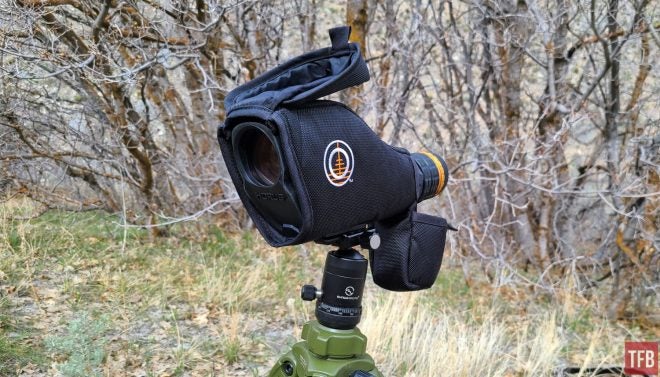
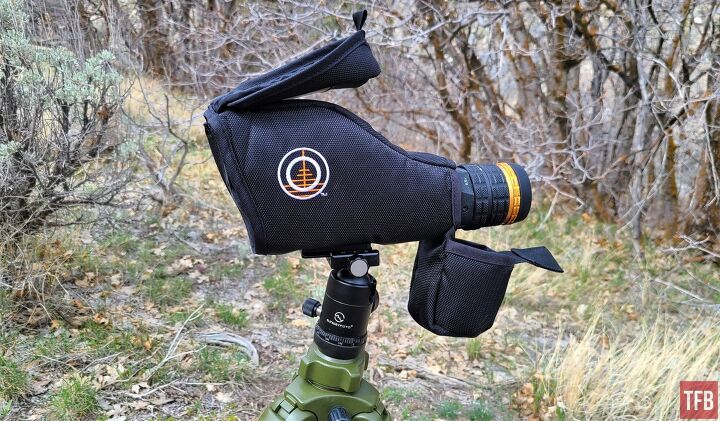
Specifications:
(Measurements taken from review sample)
- Length: 10.75″
- Width: 2.5″
- Height: 4.25″
- Weight:
- Magnification: 6.5-40x
- Objective Size: 50mm
- Country of Manufacture: Taiwan
 Your Privacy Choices
Your Privacy Choices
